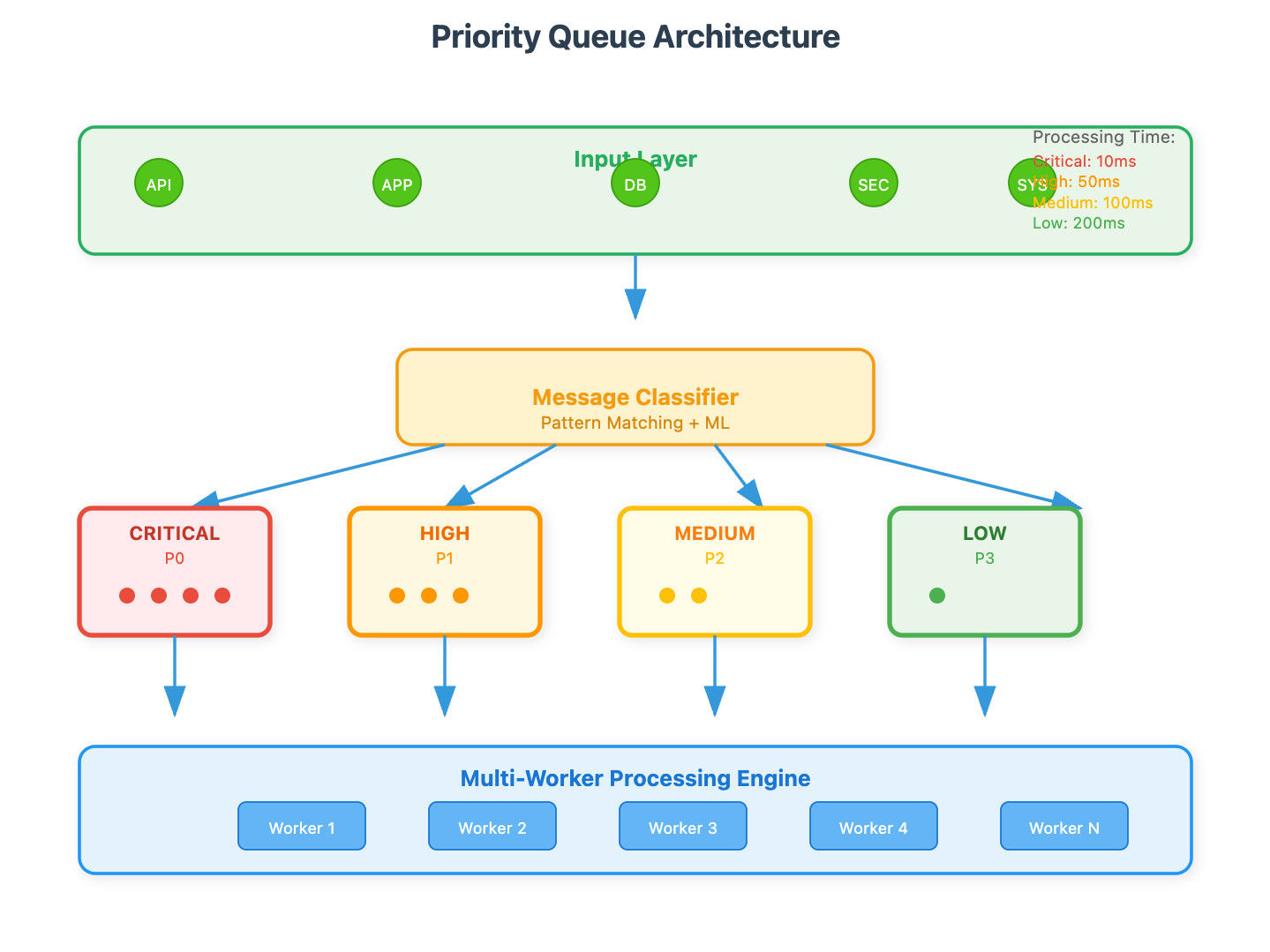Day 37: Priority Queues for Critical Log Messages
A hands-on lesson from the "254-Day System Design" series teaching production-ready distributed systems
When Your System's Emergency Calls Need the Fast Lane
The Emergency Room Problem
Imagine running an emergency room where a patient with a paper cut walks in, followed by someone having a heart attack. You wouldn't treat them first-come-first-served, right? The heart attack patient gets immediate attention while the paper cut waits.
This is exactly what priority queues do for your log processing system. When your payment service throws an error, that message needs to bypass routine "user clicked button" logs. In distributed systems handling millions of messages, this prioritization means catching critical issues in seconds versus hours.
[📊 : Component Architecture Diagram]
Why Priority Queues Are Critical in Production
In systems at scale, you're not just processing logs—you're triaging digital emergencies. A single Kafka cluster might handle 10 million messages per second, but buried in that flood are critical alerts about service failures, security breaches, or payment failures.
Without priority queues, critical alerts get stuck behind routine logs. By the time you process that payment failure alert, you've lost customers and revenue. Priority queues ensure your system's "emergency calls" always get through first.
Key Production Benefits:
Reduced MTTR: Critical issues surface in seconds, not minutes
Resource Optimization: High-priority processing uses dedicated threads
Business Impact Mitigation: Financial and security alerts get immediate attention
SLA Compliance: Meet strict processing time requirements for critical events



